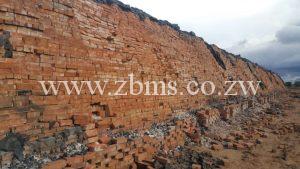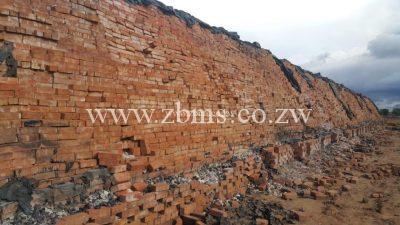Many people tend to wonder how brick making began and when were they first used. Moreover how were the bricks improved from what they were like centuries ago. In the first place the use of clay brick for masonry structures dates back many thousands of years to the sun-baked bricks. Different from today Ancient people graded and mixed clay with water manually as there were no machineries. After mixing with water, they cast or throw down hardly the mixture into brick forms for shaping cause in order to make sure adequate clay gets in the form. After shaping they lay them on the ground for sun drying which lasted about 2 to 7 days.
Firing or burning of bricks
The process of burning, or firing, bricks to produce a stronger and more durable material was a later development that we also recall with reference from the bible when the Israelites were made to burn the bricks using straws. There are varieties of ways that came to use including wood burning under the influence of the Romans. Fired brick was introduced into Britain through the conquering Roman legions around 2,000 years ago. Later on when the scramble for Africa came to happen, these brick making upgrades were also introduced in Africa.
General making
Handmade bricks are normally made from the topmost, post-glacial surface deposits, brick earths, and clays. Up until around nineteenth century, bricks were usually from boulder clay, mud, and silt deposited in and around lakes, rivers, and estuaries. The development of mechanization in the nineteenth century allowed for the excavation of older, deeper, and harder clays. In Zimbabwe today there are large open pits left by brick manufactures after mining hard clays for bricks manufacturing. The individual nature of this clay influenced both the process of manufacture, and drying and firing methods. As has been noted red clay is a complete raw material and does not necessarily need any other ingredients. The raw material was excavated, ground, and prepared for particular molding processes – such as machine pressed or extruded wire-cut bricks.

Summary
The process as it was before has remained the same except for the new ideas that have come to implementation. Clay is mined and excavated then graded removing sticky mud before grinding. Individuals making farm and semi common bricks do not grade the clay due to lack of machinery and equipment. From grinding the clay is mixed with water, put into brick forms, pressed then dry in the sun.
There are generally two methods of firing the bricks these days. Either within temporary clamps consisting of layers of green bricks carefully arranged on a prepared base of parallel fire channels (or tunnels) formed with previously fired bricks. Or rather in a mechanized and controlled, heated drying rooms that allow brick making to take place in a speed ed up process. At the same time producing a more consistent and controllable quality in the final brick. In effect with this mechanized brick making method, bricks are made all year round non stop. Clamps are disadvantaged during rainy seasons as the fire may be turned down by heavy rains.
However now depending on the expense incurred by the manufacturer during making process, this determines their bricks prices.

